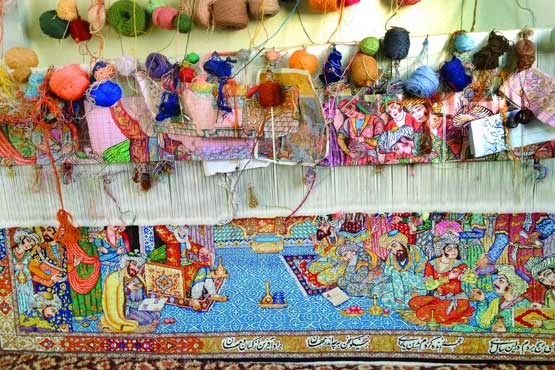The Unique Beauty of East Turkestan Carpets
East Turkestan carpets, also known as Xinjiang carpets, are distinguished by their intricate designs and rich cultural heritage. Originating from the northwest region of China, particularly in Xinjiang, these carpets are a testament to the region’s diverse influences, including Chinese and Turkmenistan patterns.
Historical Significance and Production Centres
Carpet weaving in East Turkestan has a long and storied history. The primary cities known for their carpet production are Kaxgar (Kashgar), Yarkand, and Khotan. Historically, these carpets were known to Western traders as Samarkand carpets because they were commonly encountered in the trading hub of Samarkand.
Design and Patterns
East Turkestan carpets are renowned for their unique blend of geometric and classical Chinese motifs. Traditional patterns often include intricate floral designs, medallions, and latticework, showcasing a fusion of cultural influences. The colour palettes typically feature rich, vibrant hues, achieved through the use of natural dyes.
Evolution of East Turkestan Carpets
After 1945, the production of these carpets continued under the name Sinkiang or Xinjiang carpets. Modern versions of these rugs often incorporate handspun yarn and synthetic dyes. While the traditional geometric and Chinese patterns remain prevalent, contemporary designs may also reflect more simplified motifs suitable for everyday use.
Craftsmanship and Materials
East Turkestan carpets are handmade, showcasing exceptional craftsmanship and attention to detail. The weaving techniques have been passed down through generations, ensuring the preservation of traditional methods. These carpets are usually made from high-quality wool, which is both durable and soft, making them ideal for various settings in the home.
Cultural Influence
The designs of East Turkestan carpets are heavily influenced by the region’s diverse cultural heritage. The patterns often symbolize various aspects of life, nature, and spirituality. This cultural richness is reflected in the detailed motifs and harmonious colour schemes, making each carpet a unique work of art.
Modern Adaptations
In contemporary settings, East Turkestan carpets are valued not only for their aesthetic appeal but also for their cultural significance. They add a touch of elegance and history to any space, from traditional homes to modern interiors. Collectors and interior designers alike appreciate these carpets for their unique beauty and craftsmanship.
Conclusion
East Turkestan carpets are more than just floor coverings; they are a reflection of a rich cultural tapestry woven over centuries. From the bustling trade routes of Samarkand to the modern production centres in Xinjiang, these carpets tell a story of artistry, tradition, and enduring beauty. Whether you are a collector or simply someone who appreciates fine craftsmanship, an East Turkestan carpet is a timeless addition to any home.
Explore our collection of East Turkestan carpets to discover the perfect piece that brings a touch of history and elegance to your living space.

